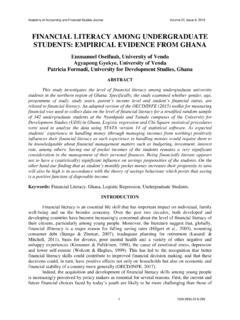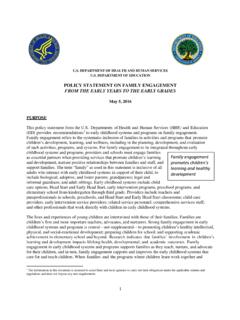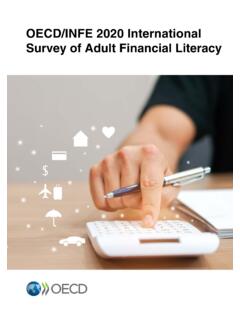Transcription of What is critical literacy? What is its history? What are ...
1 1 What is critical literacy ? What is its history? What are its practices in society and the classroom? From Heather Coffey s Resistant Perspective Producing Counter Texts Taken from LEARN NC critical literacy is the ability to read texts in an active, reflective manner in order to better understand power, inequality, and injustice in human relationships. For the purposes of critical literacy , text is defined as a vehicle through which individuals communicate with one another using the codes and conventions of society .1 Accordingly, songs, novels, conversations, pictures, movies, etc. are all considered texts. The development of critical literacy skills enables people to interpret messages in the modern world through a critical lens and challenge the power relations within those messages. Teachers who facilitate the development of critical literacy encourage students to interrogate societal issues and institutions like family, poverty, education, equity, and equality in order to critique the structures that serve as norms as well as to demonstrate how these norms are not experienced by all members of society.
2 History and theory of critical literacy The term critical literacy was developed by social critical theorists concerned with dismantling social injustice and inequalities. These critical theorists contend that unequal power relationships are prevalent, and those in power are the ones who generally choose what truths are to be privileged. Through institutions like schooling and government, these ideologies are supported, thereby perpetuating the status quo. Within schools, only particular knowledge is legitimized, thus excluding groups who are unable to contribute to the process of the authentication of that knowledge. According to Ann Beck, critical educational theory or critical pedagogy applies the tenets of critical social theory to the educational arena and takes on the task of examining how schools reproduce inequality and justice. 2. critical social theorists are concerned with oppressive and unjust relationships produced by traditional forms of schooling and critique the traditional models of education, which typically place the teacher at the front of the classroom possessing and transmitting the knowledge to students who sit idly learning or receiving the In Pedagogy of the Oppressed, Paulo Freire provides an example of how critical literacy is developed in an educational context.
3 Freire proposes a system in which students become more socially aware through critique of multiple forms of injustice. This awareness cannot be achieved if students are not given the opportunity to explore and construct knowledge. Freire describes a traditional type of education as the banking concept of education. This model of education is characterized by instruction that turns [students] into containers, into receptacles to be filled by the teacher. In these classrooms, knowledge is a gift bestowed by those who consider themselves knowledgeable upon those whom they consider to know nothing, and the teachers separate themselves as being the possessors of In this role, the teacher does not necessarily challenge the students to think authentically or value students own funds of knowledge. In opposition to the banking model, teachers who recognize the possible value of developing critical literacy do not view their students as vessels to be filled, and instead create experiences that offer students opportunities to actively construct knowledge.
4 In this model, schools become spaces where students interrogate social conditions through dialogue about issues significant to their lives. Teachers engaged in critical literacy serve less as instructors and more 2 as facilitators of conversations that question traditional power relations. Knowledge emerges only through invention and re-invention, through the restless, impatient, continuing, hopeful inquiry human beings pursue in the world, with the world and with each other .5 Using critical pedagogical methods, teachers create spaces where they can be learners and students can be teachers, thus providing a context for everyone to construct and interrogate theories of knowledge. critical literacy in practice The development of critical literacy encourages students to question issues of power explicitly disparities within social contexts like socio-economic status, race, class, gender, sexual orientation, Becoming critically literate means that students have mastered the ability to read and critique messages in texts in order to better understand whose knowledge is being privileged.
5 Essentially, teachers using critical pedagogy demonstrate how to evaluate the function language plays in the social construction of the self. Michele Knobel and Colin Lankshear suggest that when students become critically literate, they can examine ongoing development, the parts they play in the world, and how they make sense of Facilitating the development of critical literacy promotes the examination and reform of social situations and exposes students to the biases and hidden agendas within Thus, in order to become critically literate, one must learn to read in a reflective manner; read in this connotation means to give meaning to messages of all kinds, instead of just looking at the words on a page and comprehending the meaning of those words. Instruction that encourages critical literacy development comes as a response to the marginalization of a growing number of American students who are not members of the culturally dominant group of white, middle-class youths.
6 Furthermore, according to Adrian Blackledge, critical literacy emphasizes the potential of written language to be a tool for people to analyze the division of power and resources in their society and transform discriminatory structures. 9 critical literacy and social action There is often an activist component to critical literacy education, where the teacher serves as the facilitator of social change. Joseph Kretovics suggests that in addition to teaching students functional skills, the teacher must also provide conceptual tools necessary to critique and engage society along with its inequalities and injustices. 10 Furthermore, with the activist potential in critical literacy education, students will learn how to envision a world in which all people have access and When students learn to use the tools of critical literacy , they can expose, discuss, and attempt to solve social injustices within their own lives. When engaging in the development of critical literacy skills, students learn to acknowledge the unfair privileging of certain dominant discourses in which society engages.
7 Students participate in conversations about the injustices of privileging one group or ideal over another because of skin color or socio-economic status, and teachers can help to empower students by providing opportunities for them to find their voices. Teachers engaged in methods that support critical literacy can, as Lisa Delpit suggests, let our students know they can resist a system that seeks to limit them to the bottom rung of the social and economic ladder. 12 By developing lessons based on dialogue with students about their needs and interests, educators can invite students to take part in a larger community discourse that attempts to solve problems and create alternatives to oppressive situations. Linda Christensen suggests connecting the curriculum to the outside world in a tangible way. By participating in social action projects or creating a public discourse, students may see the relation between curriculum and the world beyond the walls of the school.
8 Essentially, students learn to 3 restructure their knowledge base and challenge accepted societal norms in order to transform all institutions that critical literacy in the classroom Because critical literacy theory focuses on the relationships between language, power, social practice, and access to social goods and services, there are numerous methods of engaging students in becoming critical members of their society. Within the frame of critical literacy , it is important to look at texts, like novels, magazine articles, short stories, films, etc., through a lens that challenges societal norms. Students can evaluate whose knowledge is being privileged in texts and de-construct the message of those meanings. As readers, students must also evaluate the social construction of a text and question the factors that may have influenced the author to create the text in a specific manner. Moreover, using critical literacy , teachers encourage students to look at texts from other perspectives and re-create them from the standpoint of marginalized groups in order to analyze the power relations and social inequities promoted by the texts.
9 Edward Behrman explains that the development of critical literacy encourages social justice and exploration of language and literature in many forms. Behrman suggests that the specific types of lessons examine power relationships that are found in language and literature and that these practices show students that language is never neutral. Because critical literacy looks different in every classroom, based on the subject matter and the population of students, there is no formula for how teachers engage students in mastery of critical literacy ; however, there are some practices that appear in lessons more commonly. Behrman maintains that developing a pedagogy that includes critical literacy is an organic process that continually needs to be revisited and Behrman reviewed articles, published between 1999 and 2003 in The Journal of Adolescent and adult literacy that focused on lessons and units emphasizing critical literacy pedagogy in middle and high school grades.
10 Behrman s methodology included searching electronic databases for the keyword critical literacy . After refining his search to include articles that contained classroom applications only, Behrman found 36 articles that presented lessons or units intended to support critical literacy at the upper primary or secondary levels (grades 4-12). 15 Behrman s search revealed that the most commonly used practices that support critical literacy included: reading supplementary texts; reading multiple texts; reading from a resistant perspective; producing counter-texts; having students conduct research about topics of personal interest; and challenging students to take social Reading Supplemental Texts Reading supplementary texts representative of today s changing media and technology allows students to make connections with the literature or content being studied. Supplementary texts also provide the context for students to confront social issues that are often avoided by canonical works and/or are not covered in dated textbooks.


![Gender Equality and Women's Empowerment in India [OD57]](/cache/preview/0/7/f/d/9/7/1/6/thumb-07fd97166dd92c7359501888c42037d3.jpg)




